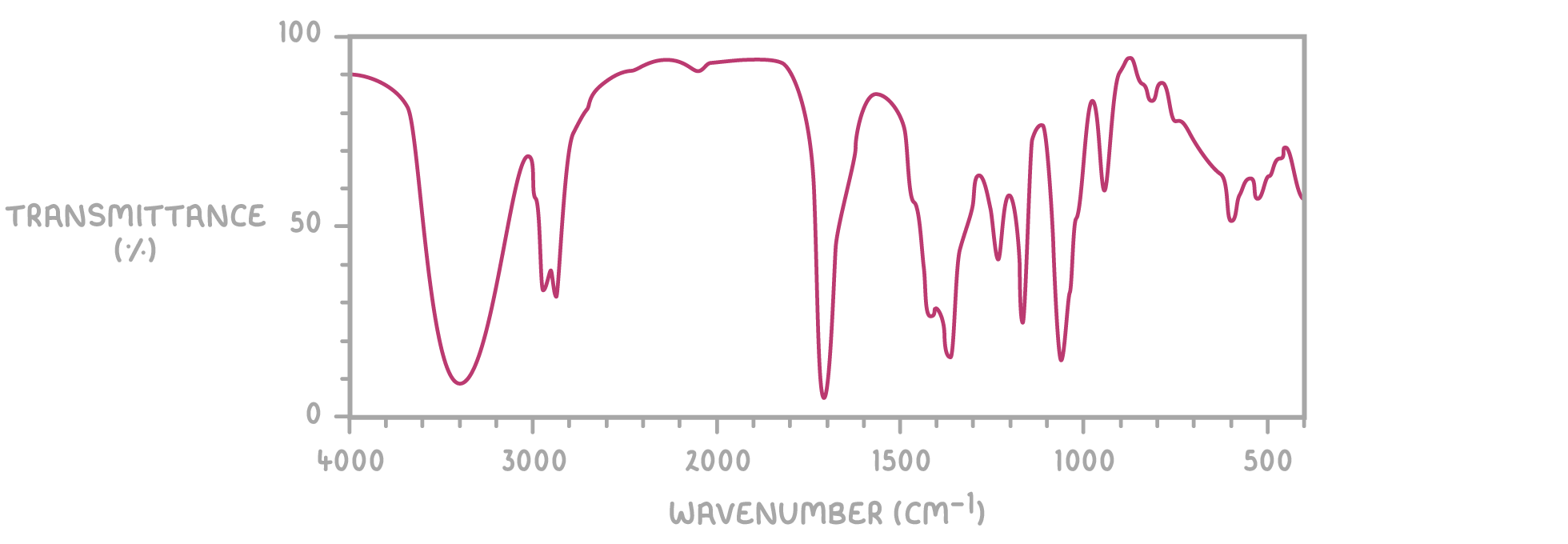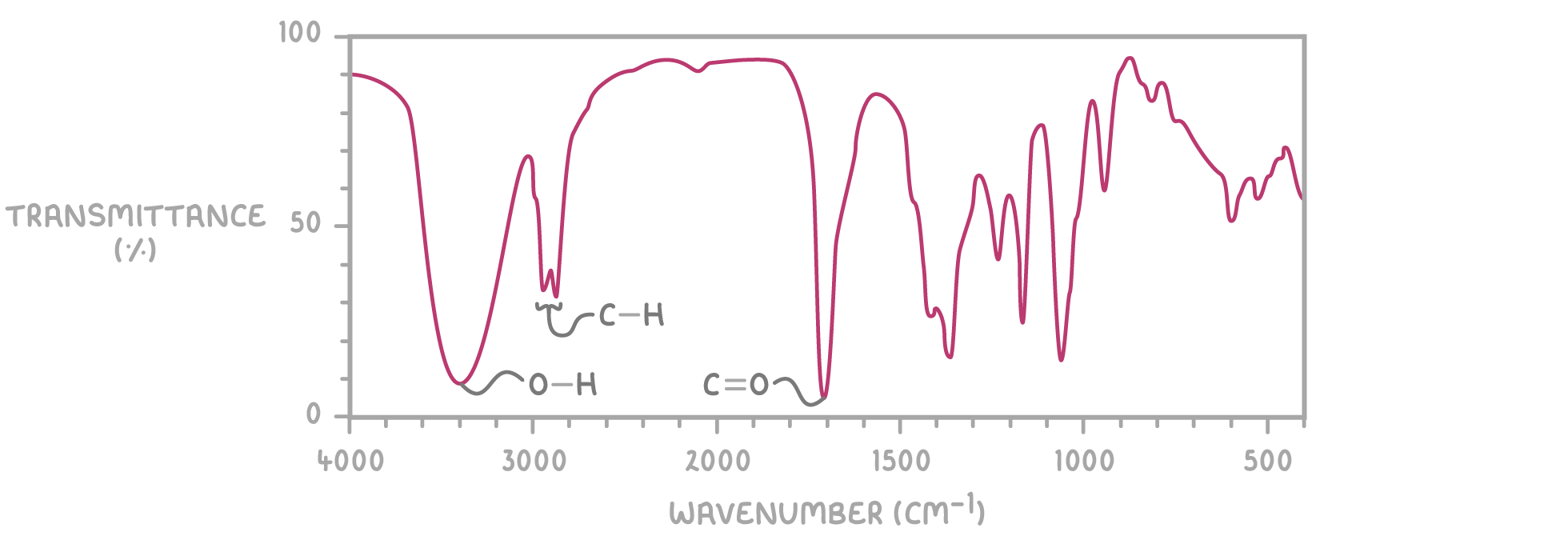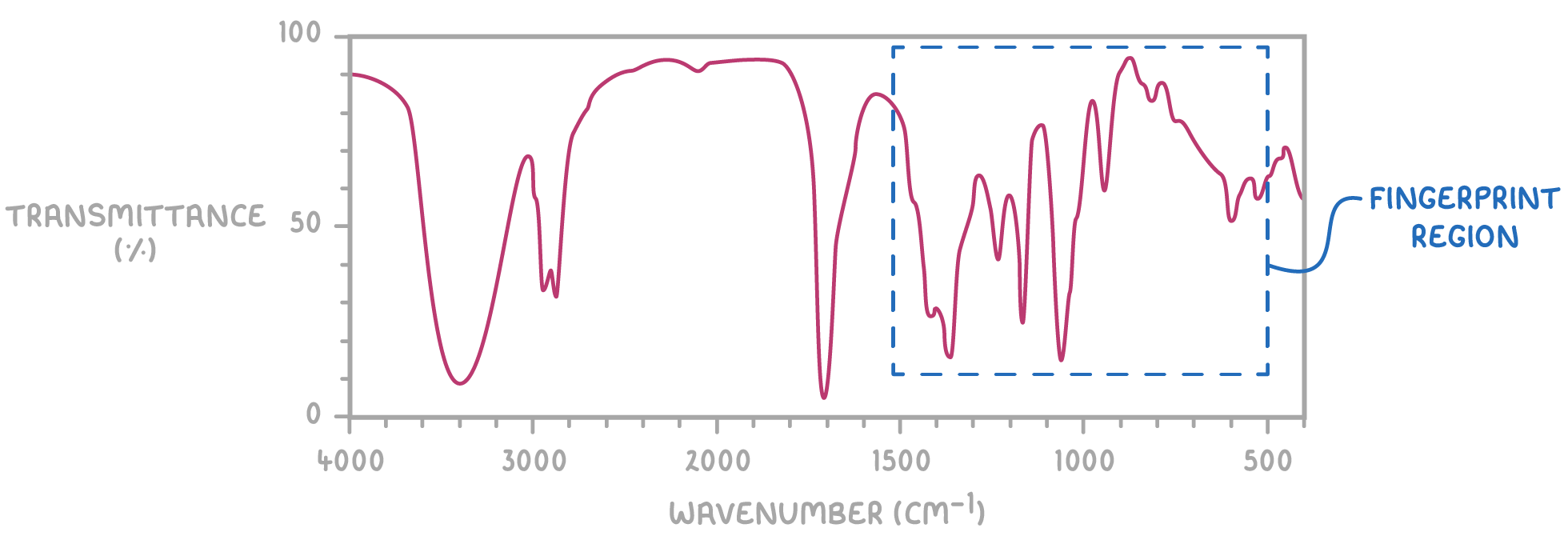Infrared Spectroscopy
This lesson covers:
- The basic principles of infrared spectroscopy
- The fingerprint region
Infrared radiation is absorbed by covalent bonds
Infrared (IR) spectroscopy takes advantage of the fact that covalent bonds in molecules can vibrate at specific natural frequencies. An infrared spectrometer passes IR radiation through a sample. When the IR frequency matches the natural frequency of a certain covalent bond, that bond absorbs the radiation.
Different bonds, in different environments, absorb at different frequencies. By detecting which frequencies are absorbed, an IR spectrometer produces a spectrum showing the frequencies and intensity of IR radiation absorbed.

The ‘peaks’ point downwards because they show you where radiation is being absorbed.
Identifying functional groups
Covalent bonds absorb IR radiation at characteristic frequencies. These are expressed in terms of wavenumber which is inversely proportional to wavelength. The table below lists various functional groups along with the wavenumber ranges at which they absorb IR radiation.
You do not need to memorise this data but you do need to know understand how to use it.
| Bond | Functional group | Wavenumber range (cm-1) |
|---|---|---|
| N-H | Amines | 3,300 - 3,500 |
| O-H | Alcohols | 3,300 - 3,600 |
| O-H | Carboxylic acids | 2,400 - 3,300 |
| C-H | Most organic molecules | 2,800 - 3,000 |
| C≡N | Nitriles | 2,200 - 2,300 |
| C=O | Aldehydes, ketones, carboxylic acids, esters | 1,650 - 1,850 |
| C=C | Alkenes | 1,650 - 2,000 |
| C-O | Alcohols, carboxylic acids | 1,000 - 1,300 |
By identifying which frequencies have been absorbed, the functional groups (or bonds) in an organic molecule can be deduced from its IR spectrum.

For example, the IR spectrum of 4-hydroxybutanone displays characteristic peaks corresponding to O-H, C-H, and C=O bonds, as shown above.
The fingerprint region
The section of an IR spectrum from 500 - 1,500 cm-1 is called the fingerprint region. This region produces a pattern unique to each different molecule.

An unknown compound can be identified by matching its fingerprint region to reference spectra in a database. If the patterns match it is the same molecule.
Extra peaks in the fingerprint region indicate sample impurities are present. IR spectroscopy is thus valuable for checking compound purity.